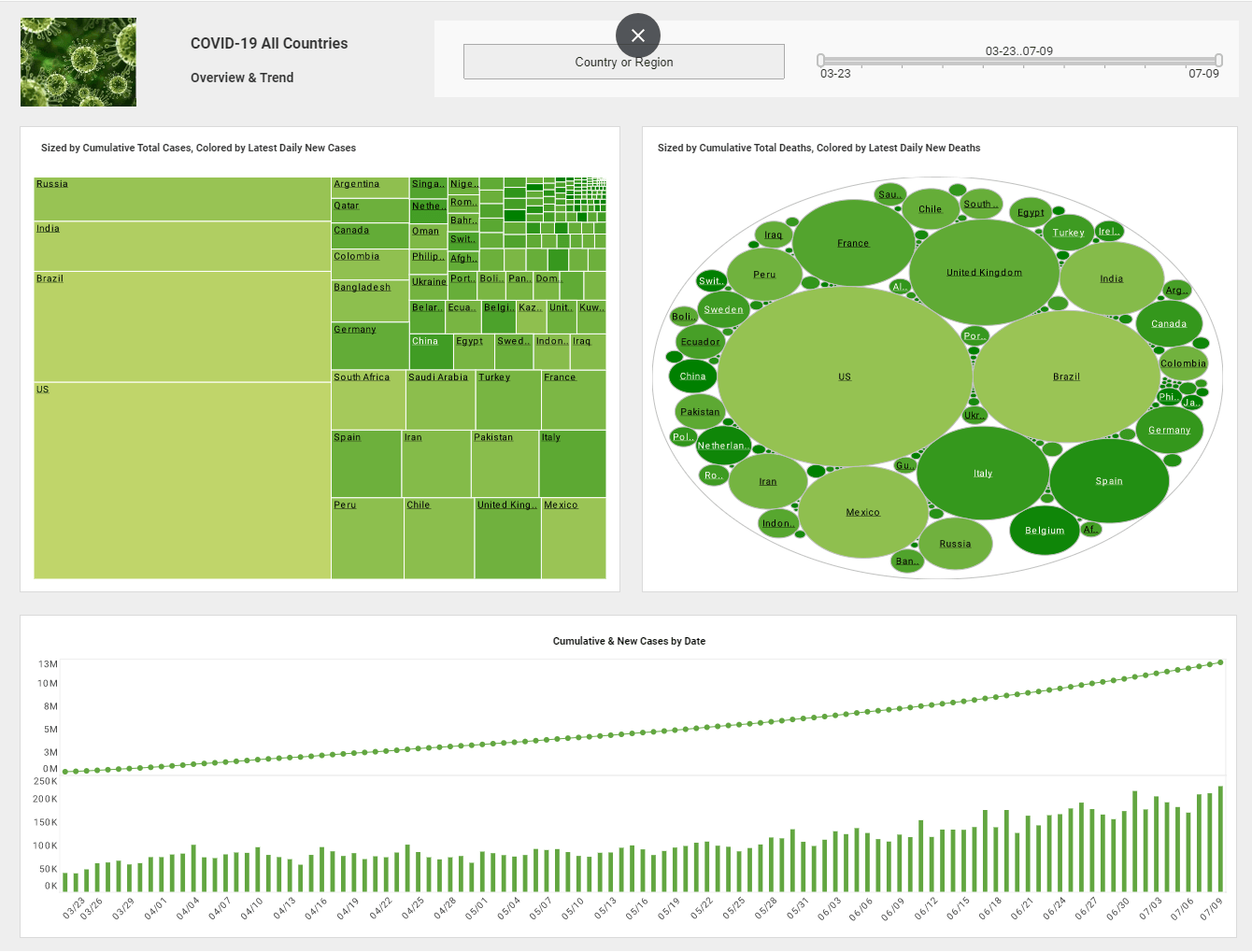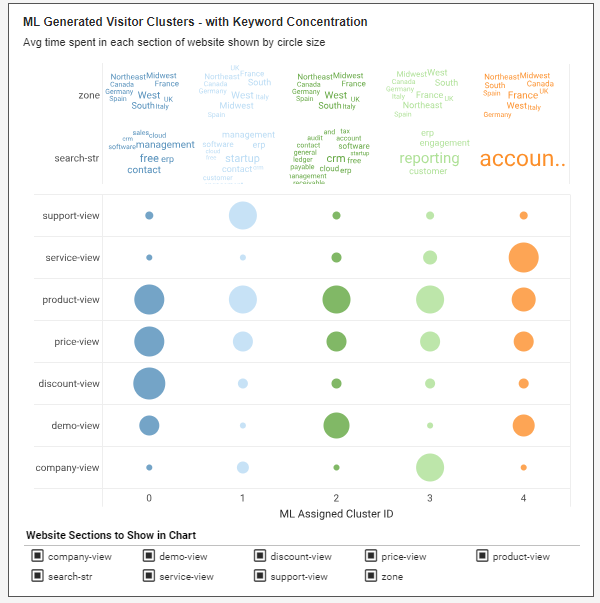What Is the Definition of an OLAP Cube ?
An OLAP cube is a specific method of storing massive amounts of data in a data warehousing environment. The term "cube" refers to the numerous defined dimensions, measures, and hierarchies by which users designate their data to be stored and constructed for in-depth analysis.
By storing data using OLAP cubes, resulting data information is precalculated and ready-to-use. The instantaneous use of OLAP eliminates the long data queries and pending requests of a conventional data warehousing environment.
This multidimensional approach enables advanced enterprise analysis. It readily combines and summarizes data in a way that is tailored to an enterprise's needs, facilitating the implementation of business solutions.
Even though the OLAP cube has made a significant impact within the data warehousing environment, it still poses issues that create data management difficulties for business-end users . Fortunately that's where InetSoft comes in; not only does StyleBI fill in the gaps OLAP cubes leave open, Style Intelligence's data mashup, reporting, and dashboarding capabilities enable data stored in OLAP cubes to be combined with a wide range of other sources.
User Defined Mashup with InetSoft
While OLAP cubes are a notable tool for data warehousing due to the preset definitions that aid in sorting and analyzing data, this feature inhibits the flexibility needed for data exploration and experimentation. Style Intelligence's robust data mashup engine can extract data from virtually any source, including OLAP cubes. Users can combine data with ease from even their own spreadsheets with data from disparate sources such as partner or vendor information.
The data mashup engine also allows users to set and modify their own data definitions for cross analysis, maximizing self-service. The simple drag-and-drop interface enables inexperienced users to build sophisticated queries without writing code. Providing significant advantages over using OLAP cubes alone, StyleBI cuts out the requirement of having IT personnel change data warehousing dimensions.
Equip Your Users with Better Data Tools
StyleBI also empowers users to experiment more with their data. Rather than being limited to the monotonous OLAP cube actions of drilling, aggregating, slicing, and pivoting, users can generate compelling reports and visualizations, that make for informative presentations and precise analysis.
StyleBI's reporting engine tool enables the publication of vivid reports that help define and monitor the past and current status of an enterprise. Style's viewsheet lets users build engaging dashboards and visualization that allows visual exploration of their data.
StyleBI's web-based platform enables the instantaneous access of real-time data, and the freedom to modify reports and dashboards off-premise. The versatile functionality of StyleBI liberates business users from the constraints of OLAP cubes, facilitating more data exploration and aiding in better business solutions.
More Articles About OLAP
-
Cut Your Data Up
Defines OLAP in plain terms and explains how the original literal meaning has evolved into modern multidimensional analysis. The article emphasizes the practical capabilities OLAP provides—slicing, dicing, aggregating—and how those operations let users explore data along many axes. It also frames OLAP as a mindset and set of techniques that support interactive, exploratory analytics rather than just static reporting.
-
Accessing An OLAP Server
Describes how InetSoft’s dashboards and reporting tools integrate with OLAP servers to deliver interactive, web-based analytic experiences. It outlines supported scenarios and the benefits of combining a robust OLAP back end with a flexible front-end for visualization and distribution. The page positions InetSoft’s platform as an easy-to-deploy way to surface OLAP data for executive and operational use.
-
Dashboard Software Connects To
Explains the practicalities of using OLAP sources with dashboard-style visualizations and interactive elements. The piece highlights self-service exploration, drag-and-drop designers, and demo examples that show how executives and analysts can ask ad hoc questions of cube data. It also points to evaluation options so readers can try OLAP-driven dashboards firsthand.
-
Method Of Storing Data
Provides a clear definition of an OLAP cube and discusses its role as a multidimensional storage model for measures, dimensions, and hierarchies. The article walks through why cubes accelerate analytics by pre-aggregating data and supporting roll-up/drill-down operations. It also gives practical context by describing common cube dimensions like time, geography, and product.
-
Multidimensional Structure Used For
Focuses on OLAP cube reporting techniques and how cube structures enable fast, complex queries across many dimensions. The page covers typical OLAP operations—slice, dice, roll-up, and drill-down—and shows how those operations translate into actionable reports and dashboard elements. It emphasizes speed and interactivity as key reasons organizations adopt cube-based reporting.
-
Slice And Dice
Serves as an instructional overview of OLAP reporting within a combined reporting-and-dashboard environment. It breaks down core OLAP operations, explains how dashboards can render those operations for end users, and demonstrates how interactive filtering and aggregation support rapid insight. The article also highlights use cases where OLAP-driven dashboards reduce reliance on IT for routine analysis.
-
Embrace An Analytical
Mindset
Takes a slightly deeper dive into the conceptual foundations of OLAP and why it’s more than just a technology—it's an analytical approach. The write-up clarifies terminology and recounts how OLAP supports exploratory thinking, not merely pre-built reports. It also offers guidance on when OLAP is the right fit for an organization’s analytics needs.
-
Access OLAP Data Sources
Summarizes InetSoft’s OLAP reporting features and how the product leverages pre- and post-aggregation to speed queries. The page highlights compatibility with popular OLAP servers and stresses the value of pairing a powerful OLAP engine with a flexible visualization front end. It also discusses practical deployment considerations for operational and management reporting.
-
Web Based Analytical Processing
Defines “Online OLAP” as the web-enabled approach to multidimensional analysis, explaining how web delivery broadens access to cube-driven insights. The page points out typical business applications—sales, marketing, management reporting—and the advantages of delivering OLAP capabilities through a browser. It also notes how online OLAP supports rapid, interactive exploration without heavy client installations.
-
Physical View And Logical Model
Introduces the virtual OLAP model concept and explains how logical models map physical schemas into business-friendly views for end users. The article describes the complementary roles of the physical view (tables/joins) and the logical model (business semantics) and how that separation supports self-service analytics. It also outlines benefits like flexibility in mashups across relational and cube data sources.


